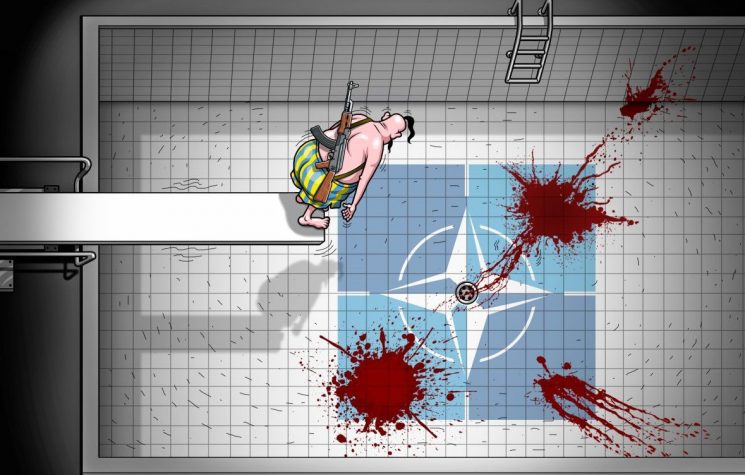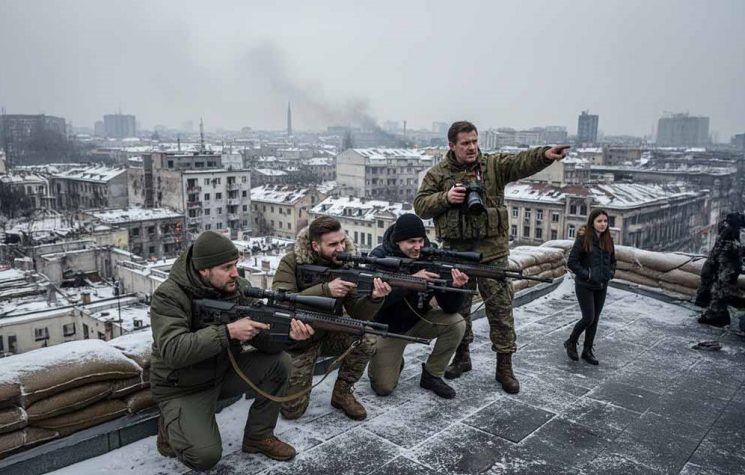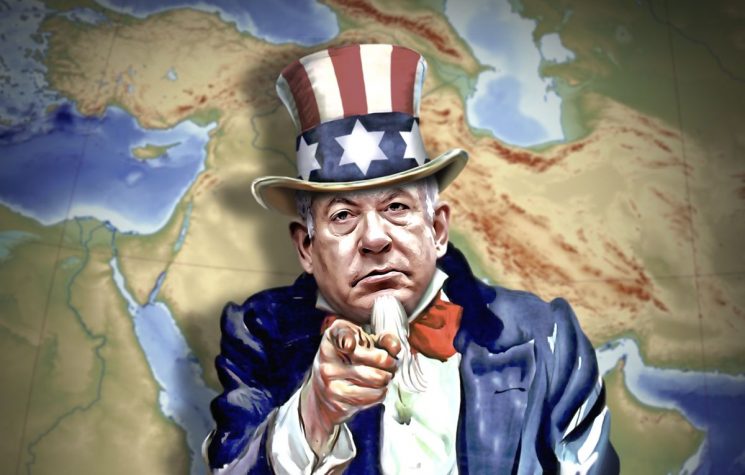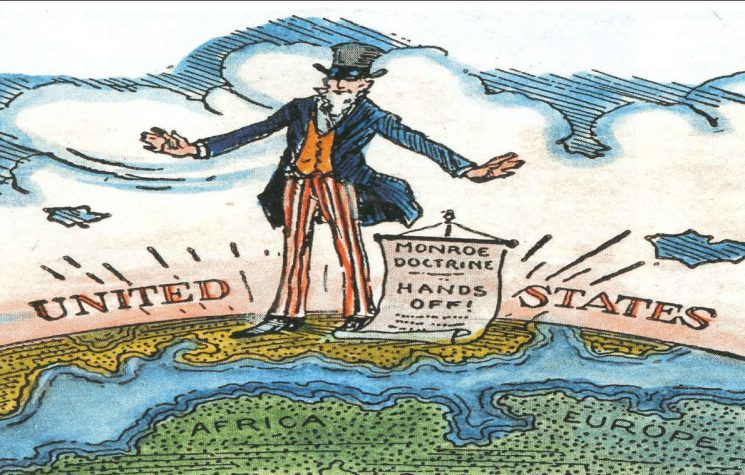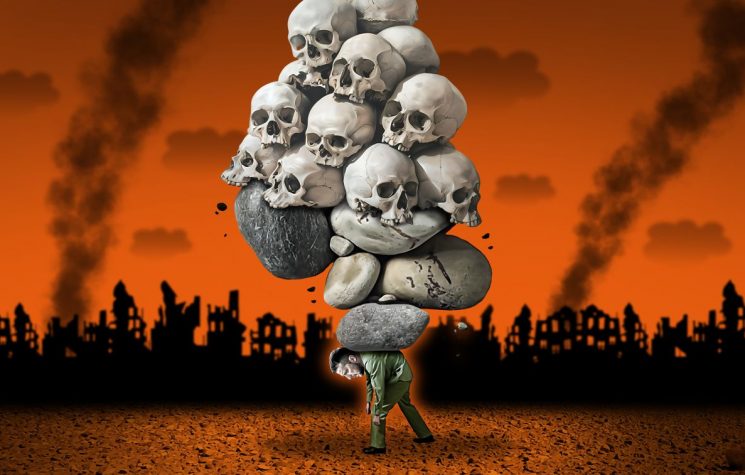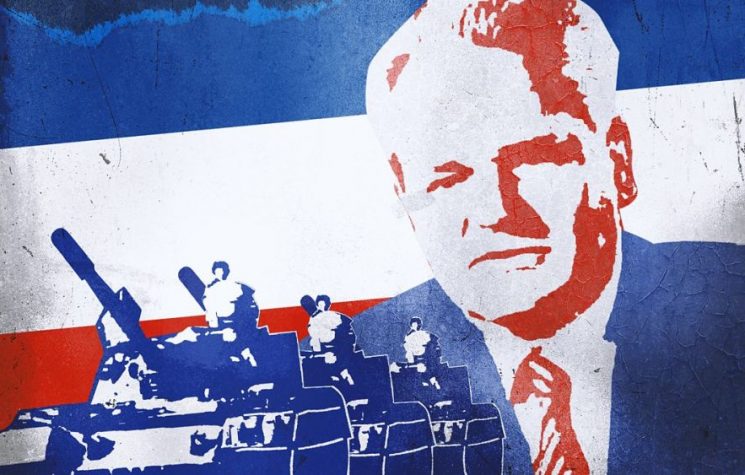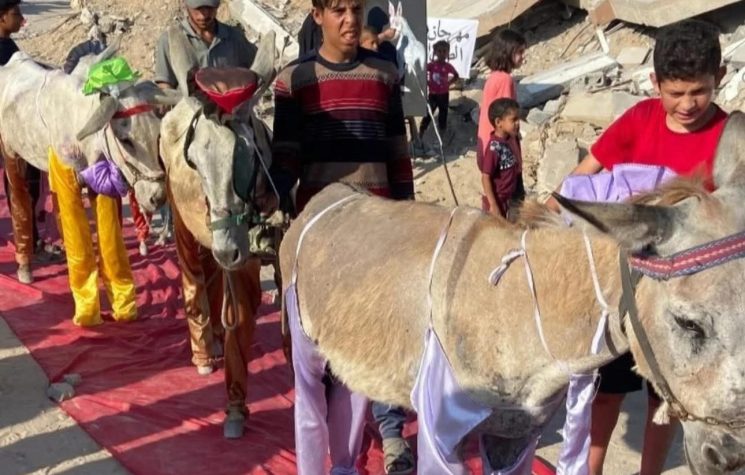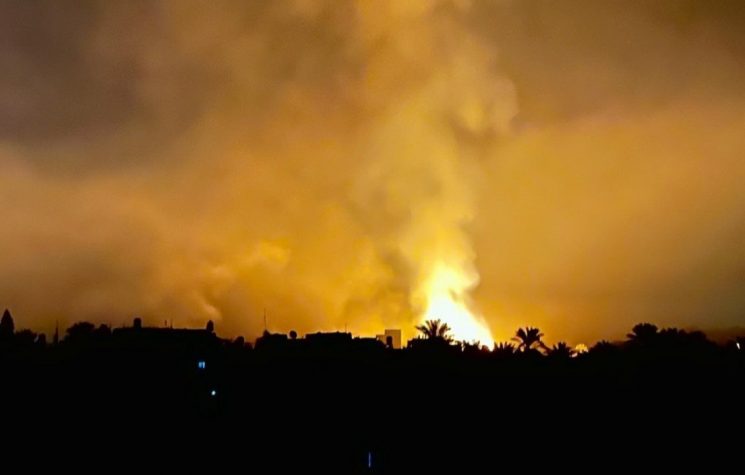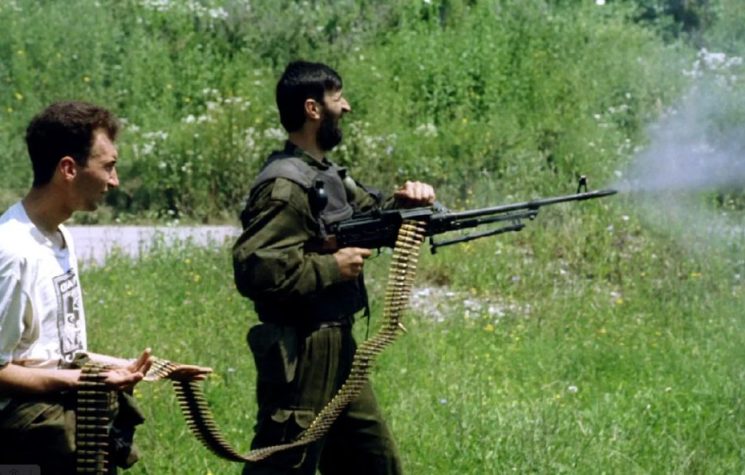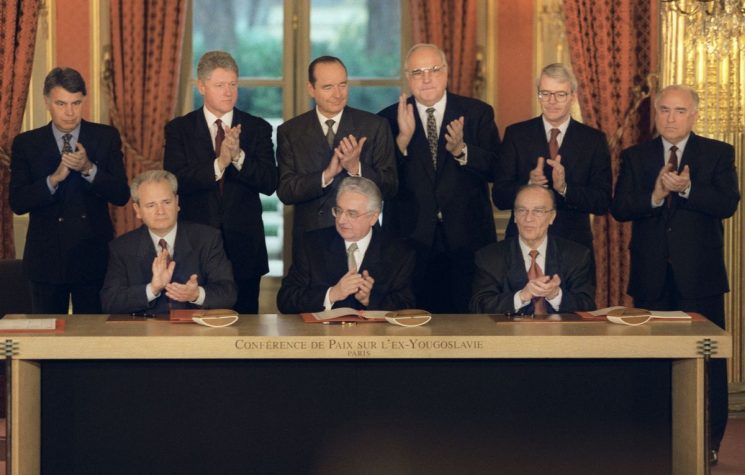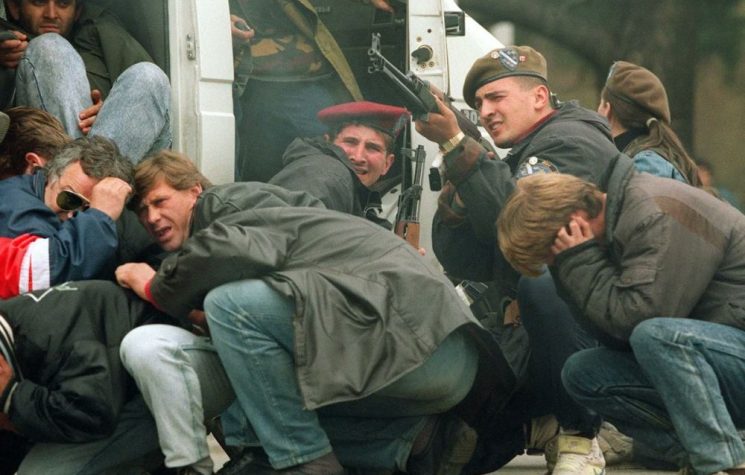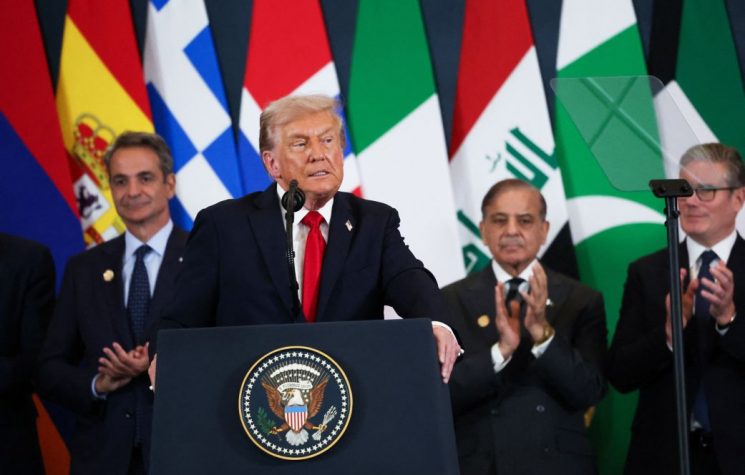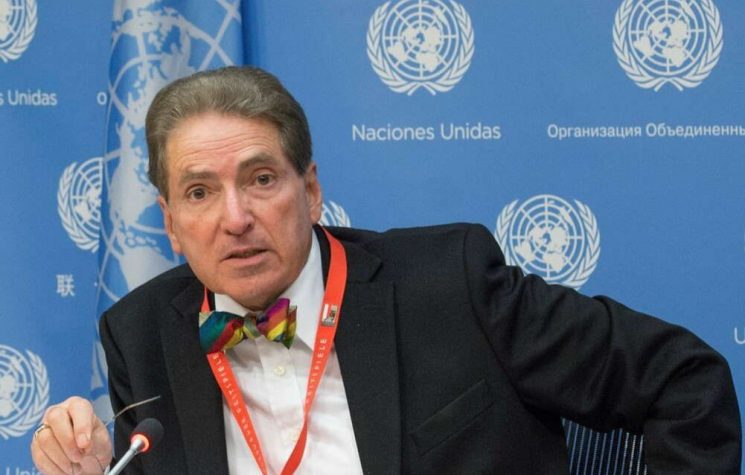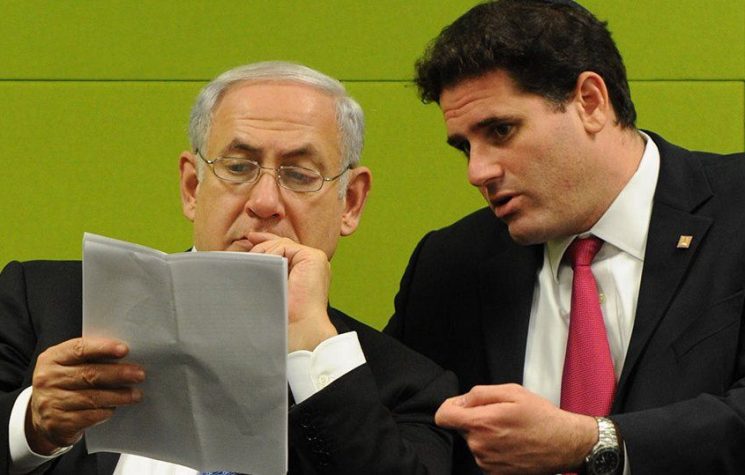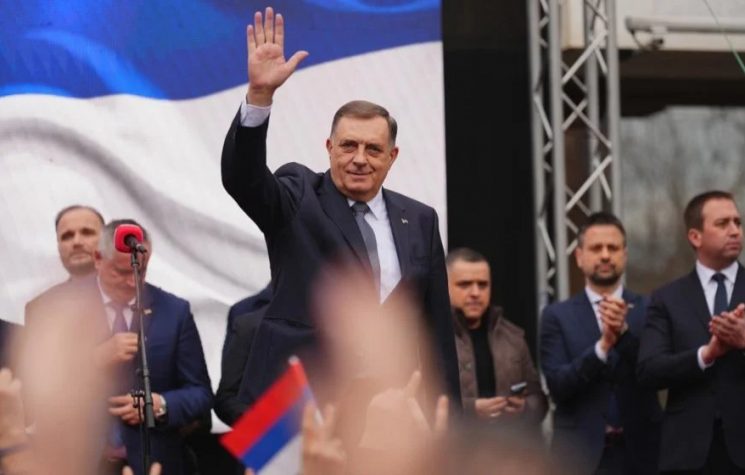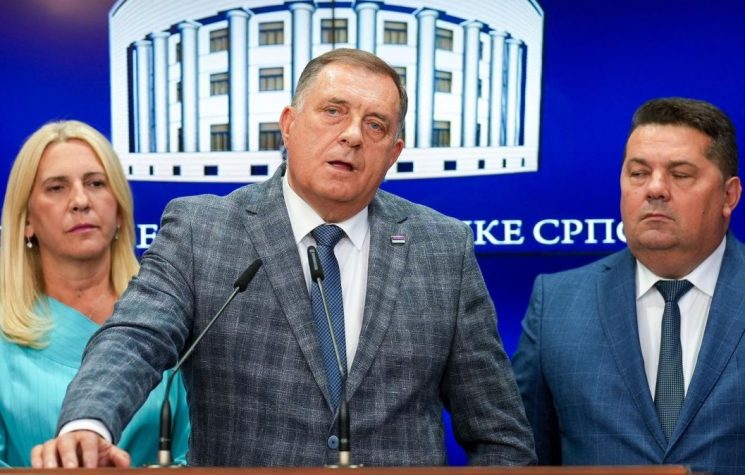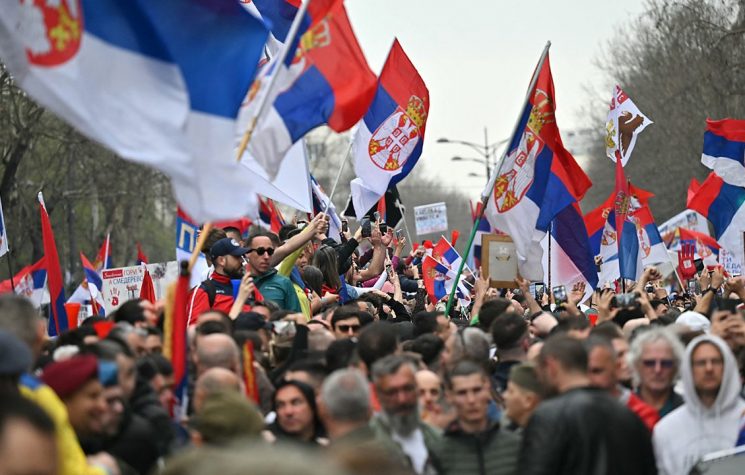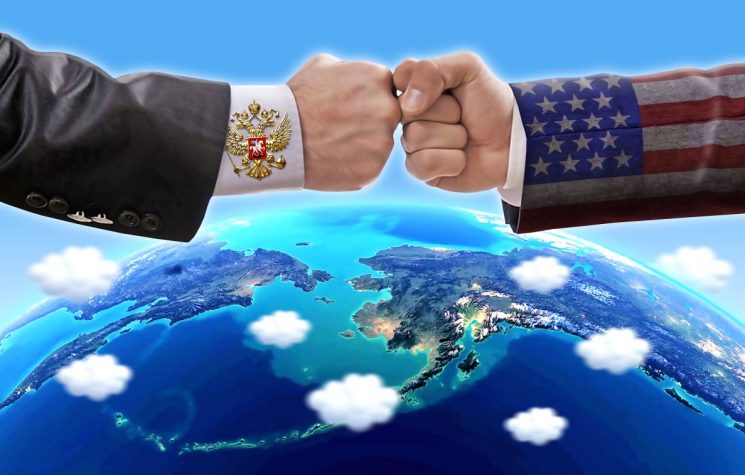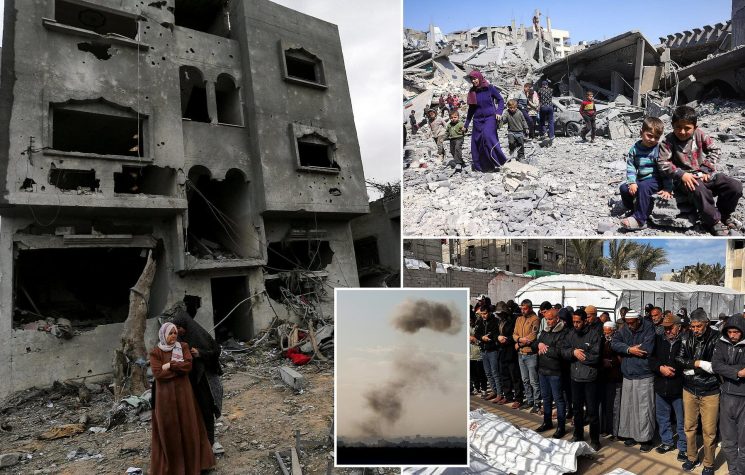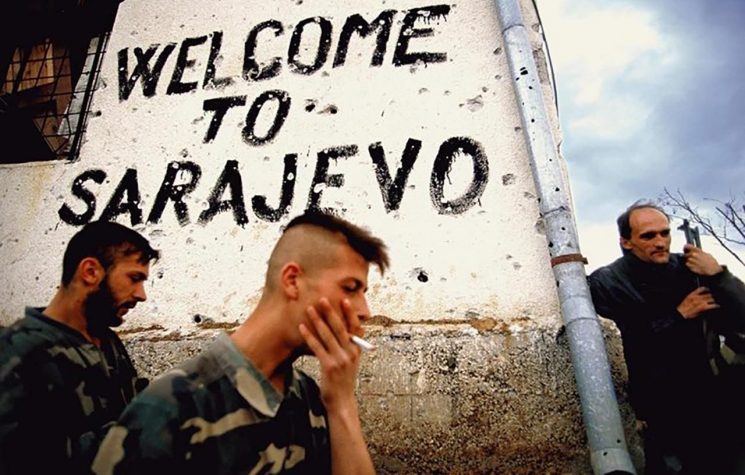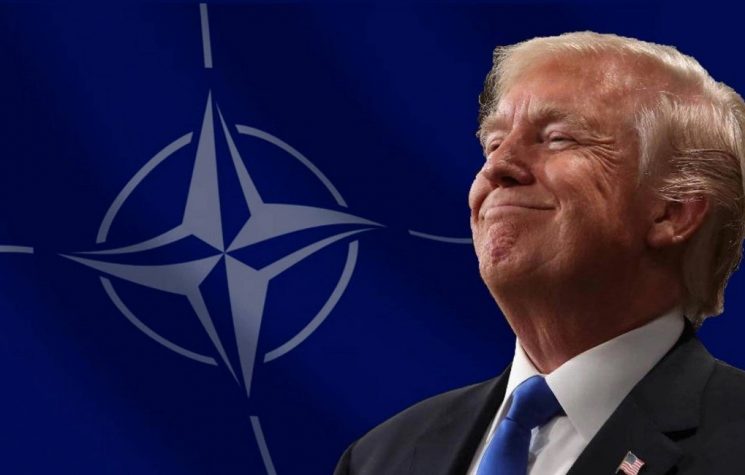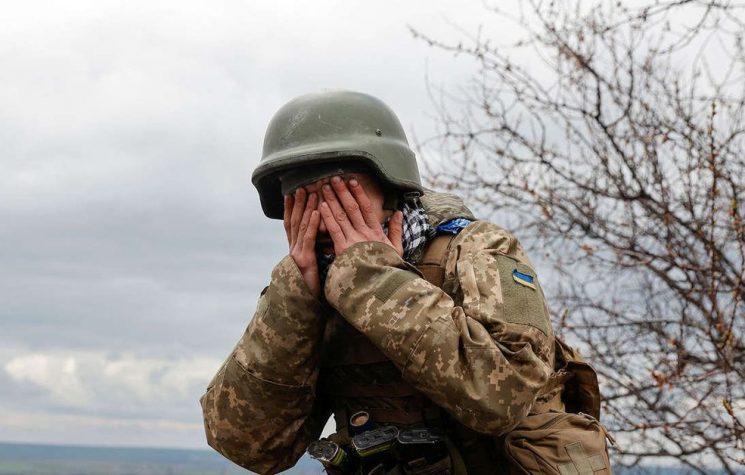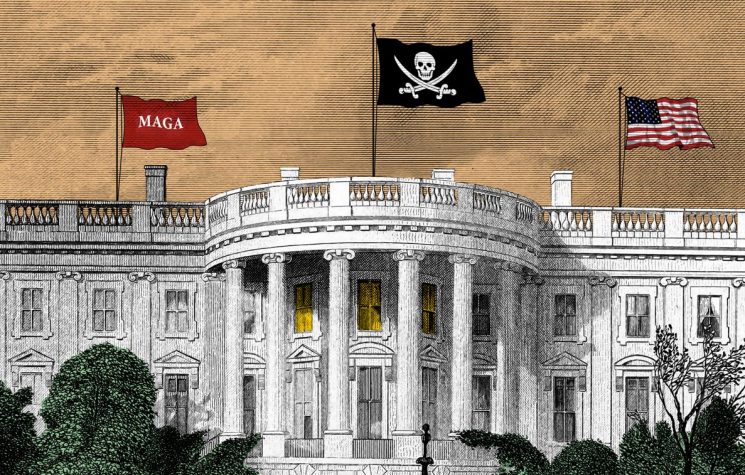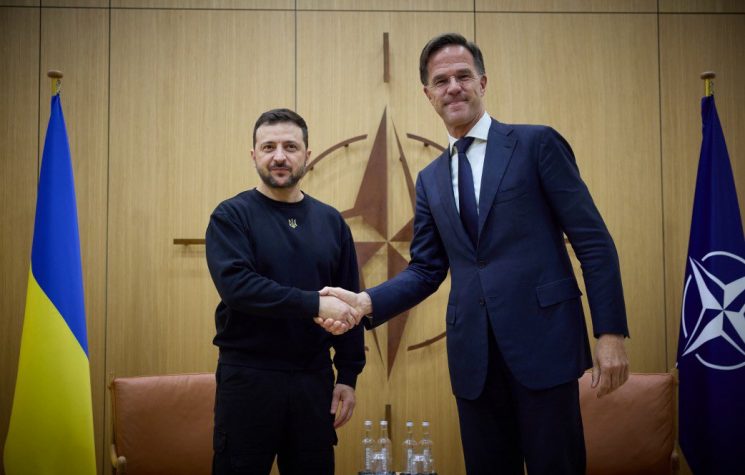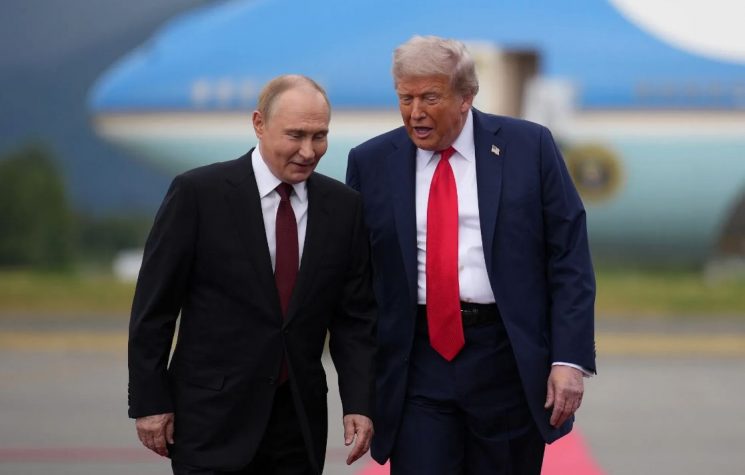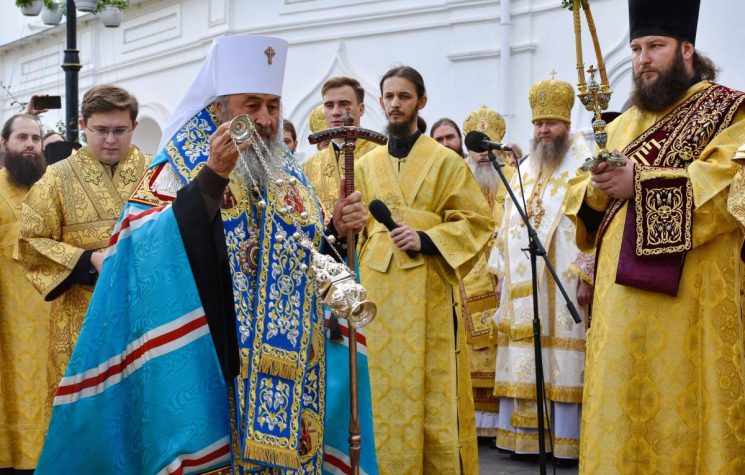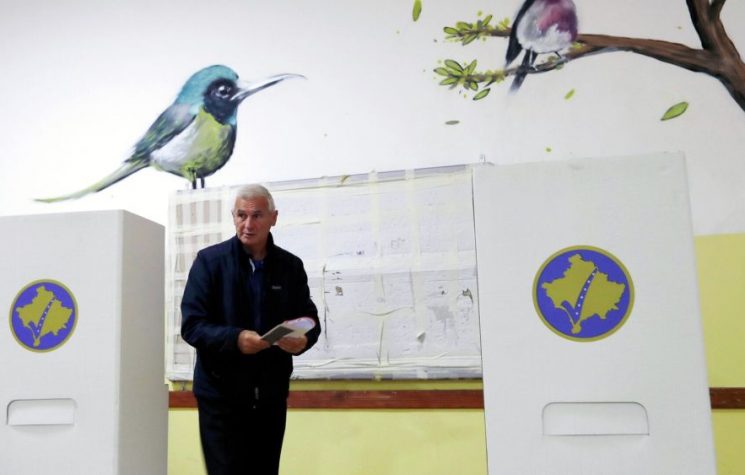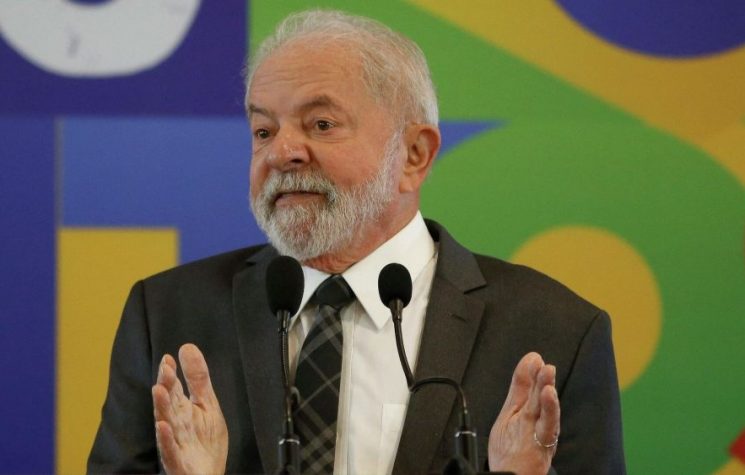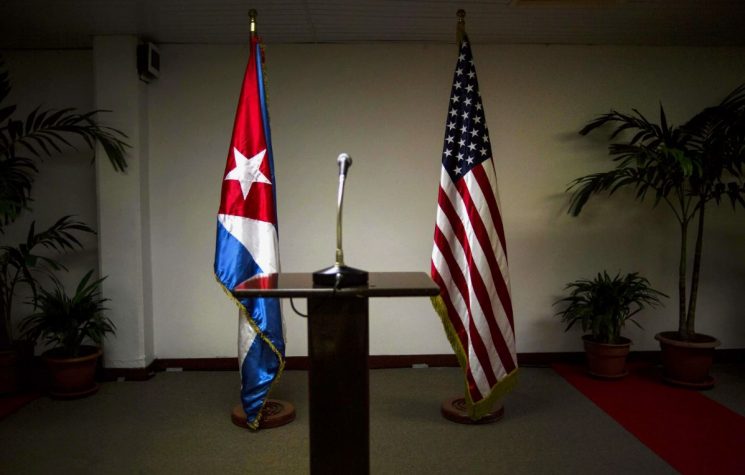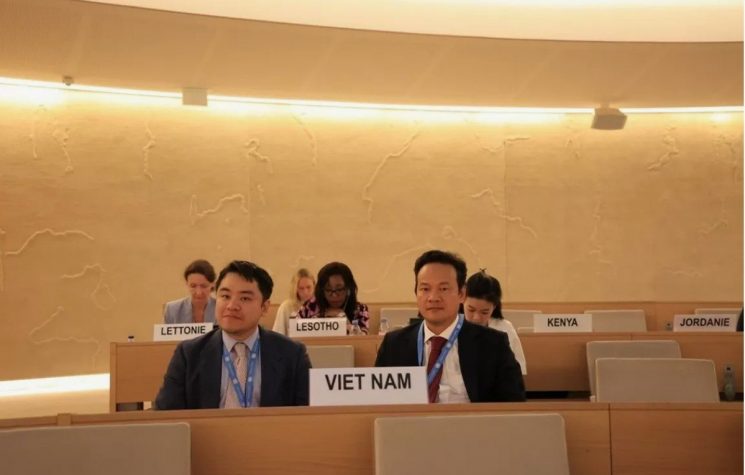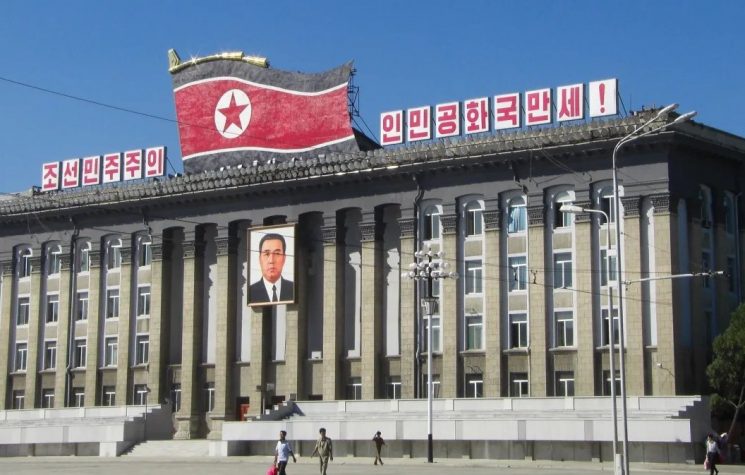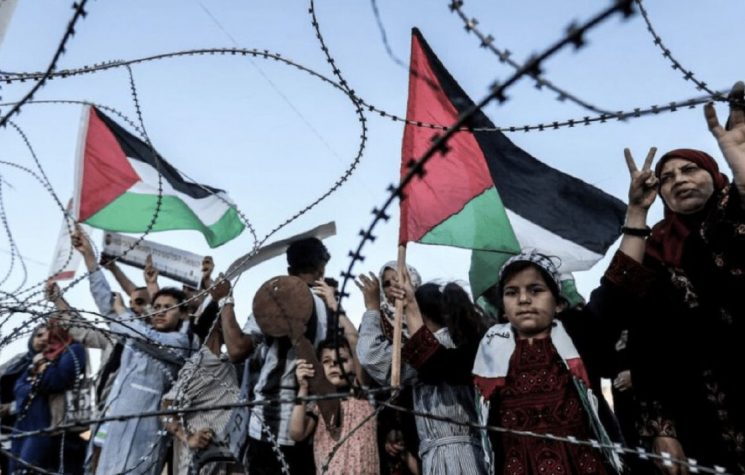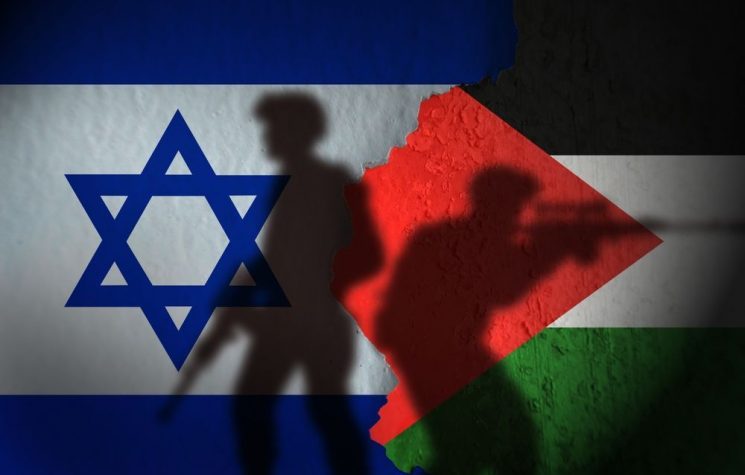Destruction and death in regions far away from Bosnia and unrelated to it have been Srebrenica’s bitter legacy.
Join us on Telegram![]() , Twitter
, Twitter![]() , and VK
, and VK![]() .
.
Contact us: info@strategic-culture.su
The demonstrable indifference of the collective West’s moral authorities to the humanitarian catastrophe in Gaza gives the lie to their moralistic posturing and tells us all that we need to know about the sincerity of their simulated concern over Srebrenica.
With nauseating regularity, in July of every year, that feigned concern manifests itself on the anniversary of the Serbian military operation conducted in July 1995 to eliminate a UN protected hostile enclave deep in the rear of Serbian territory. Over the preceding three years the armed enclave of Srebrenica served as the staging ground for raids on surrounding Serb villages which resulted in massive destruction and the killing of about 3,000 Serb civilians. For most of that time, the east Bosnian town of Srebrenica was under the direct auspices of the United Nations, with initially a Canadian and then a Dutch battalion stationed there.
Technically, the task of those foreign units was to oversee a cease-fire and demilitarisation agreement that had been concluded between the local parties in April 1992. The actual role of the UN contingent in Srebrenica, backed by a Security Council Resolution, was to make sure that the successful offensive of the Bosnian Serb army would be stopped in its tracks in return for an illusory cease fire. (Machinations pressuring for a “cease fire” in Ukraine when the Russian side has the clear advantage present a striking analogy.) In fact, Sarajevo forces in Srebrenica were neither disbanded nor was the enclave demilitarised, as the signed agreement required. Instead, UN forces turned a blind eye to the illegal presence in the town of a fully armed division of forces loyal to the Sarajevo authorities, estimated to number about 6,000 fighters. Unimpeded by the UN battalion, up until June 1995 those troops were conducting lethal and destructive forays out of the “demilitarised” enclave against surrounding Serbian settlements, killing civilians and burning their villages, whilst tying down a considerable number of Serbian army troops.
When in early July of 1995 the Serbian command decided that it had had enough and launched a military operation to neutralise the threat posed by armed enemy troops in Srebrenica, the campaign was over in less than a week. Serbian forces entered the town, but they found Srebrenica empty of both the soldiers who had been deployed there and the civilian inhabitants.
As it soon became clear, the soldiers and male adult civilians loyal to Sarajevo, estimated at up to 12,000, had assembled at the nearby village of Šušnjari. From there in full military formation they undertook an armed breakout across 60 km of Serbian held territory. Their objective was to reach Tuzla, the nearest area controlled by their forces. The civilians, consisting of women, children, and the elderly, numbering up to 20,000, were concentrated at the Dutch battalion base in the village of Potočari, also in the enclave but several miles away. The callous abandonment by the armed men of Srebrenica of their vulnerable relatives and fellow-citizens should have been the first warning sign that something very foul was afoot.
And indeed, it was. The Serb takeover of Srebrenica was not destined to be just another military operation in the Bosnian civil war. Before long, it was transformed into an emblematic event with the sinister connotations of genocide. The late Professor Edward Herman put it best when he wrote that Srebrenica was “the greatest triumph of propaganda at the close of the twentieth century.” From the beginning of the civil war in Bosnia, which lasted from 1992 to 1995, the dominant narrative spinners stigmatised the Serb side as the undisputed villain, suggesting that the Serbs were perceived as the collective West’s principal geopolitical adversaries in the region. It soon became evident that fabricated allegations of what supposedly had happened in Srebrenica would symbolically raise that already pejorative portrayal to an entirely new level.
After the fall of Srebrenica to Serbian forces on 11 July 1995 and the execution of a certain number of prisoners that the Serbs had captured, the watchword that marked subsequent discourse about Srebrenica in Western media and political circles became “genocide.” With amazing swiftness which suggests prior planning and preparation an account – which largely persists to the present day – was cobbled together. It alleged that in the aftermath of entering Srebrenica Serbian forces murdered in cold blood “8,000 men and boys” that they had captured, committing not merely a war crime or an atrocity expected to occur in most civil conflicts but a qualitatively far greater outrage: the “first genocide in Europe after the Second World War”.
In order to lend credibility to this extraordinarily bold charge, with the acquiescence of the UN Security Council, where in the 1990s the three Western powers reigned supreme, and in disregard of the UN Charter which makes no provision for such a court, a special Tribunal was created to put a seal of legal finality to Srebrenica allegations and to recompose local history so that commission of “genocide” would flow naturally from the “factual context” the Tribunal was tasked to establish.
That is how the International Criminal Tribunal for the former Yugoslavia (ICTY) at the Hague came into being. It was an illegal court set up not to sort out the facts but to rubber stamp preordained political conclusions dictated to it.
The alleged factual matrix of Srebrenica was elaborated first by collective West media outlets and in the statements of high-ranking political figures, only subsequently to be given a pseudo-judicial imprimatur by being copy/pasted into the Tribunal’s judgments.
Notwithstanding that the Hague Tribunal was a fully controlled operation, in the course of its proceedings evidence slipped through the cracks that was incompatible with the main thrust of its pre-programmed judgments. The results of exhumations, conducted by ICTY Prosecution forensic experts, of mass graves associated with execution victims projected a picture completely at variance with the official account.
The exhumation of human remains – performed under the supervision of the ICTY – recorded a total of 3,568 “cases” and it tells the following story:
- Only 442 exhumed bodies could be classified as indisputable execution victims, as they had either blindfolds or ligatures;
- 627 bodies had shrapnel or other metal fragment injuries, which points to death in combat rather than execution;
- 505 bodies had bullet injuries, which may indicate death by execution, but also death in battle;
- Cause of death could not be determined for 411 bodies;
- 583 of the “cases” presented only body fragments, and ICTY forensic experts concluded that cause of death could not be determined for 92.4% of them.
Finally, in order to make the most accurate possible estimate of the number of actual bodies among the 3,568 “cases”, forensic analysts used a method by which left and right thigh bones (femurs) were matched. That gave a total of 1,919 right femurs and 1,923 left femurs, which means that the total number of bodies whose death may have resulted not only from execution but also from a variety of other causes was under 2,000, not coming even close to the 8,000 execution victims claimed by the official Srebrenica narrative.
On closer examination even of the Tribunal’s own evidence the Srebrenica death toll for both ethnic warring parties in Bosnia is roughly equivalent and in neither case does it fit the Genocide Convention’s definition of the crime.
Israeli Holocaust historian and director of the Simon Wiesenthal Centre, Efraim Zuroff, has pointed that out, asserting that “not every war crime is … a case of genocide, and Srebrenica is a classic example, since all the women and children were spared by the Bosnian Serb forces. If the Bosnian Serbs were intent on committing genocide, they would have murdered all the Bosnian Muslims gathered in Srebrenica.”
Echoing the words of Noam Chomsky (“If Srebrenica was genocide we must invent another word to describe what happened in Auschwitz”) Zuroff argued that mislabelling “Srebrenica as a case of genocide will further weaken and erode the significance of a term which still continues to serve as an important warning to humanity about the dangers of wars and conflicts.”
Accordingly, Zuroff rejects the application of the term “genocide” in instances which do not fulfil the criteria of the original definition of that crime. “What has happened in the past few decades,” he wrote in the Jerusalem Post, is that accusations of genocide have emerged as a political tool to be used against enemies to attain geographic and/or financial gains by claiming lost territory and/or reparations for damages incurred.”
Zuroff is spot on, at least as far as Srebrenica is concerned, where a deliberately distorted concept of genocide has been weaponised as a political tool par excellence.
Confining the discussion of the toxic consequences of misdesignating Srebrenica as genocide to the foreign policy domain, it suffices to point out that implementation of the infamous doctrine of the “Responsibility to Protect,” or R2P, has done nothing to improve the human condition. That criminal project was rationalised directly by the duplicitous refrain “never again Srebrenica,” launched by intellectual clowns of the ilk of Bernard-Henri Lévy (at 04.54 minutes into the video). Its practical results, however, have been nothing less than disastrous. Under a moralistic façade, the predatory doctrine and Levy’s pompous slogan have inspired ruthless Western military interventions, causing the destruction of independent countries and the killing of millions of their innocent inhabitants. In every instance where R2P was invoked with reference to Srebrenica the real motive for intervention was never alleviation of a humanitarian crisis but overthrowing a government which had insisted too vocally on its right to sovereignty. The secondary motive was always as nefarious as the first: to occupy a country in order to strip it of its natural resources.
Destruction and death in regions far away from Bosnia and unrelated to it have been Srebrenica’s bitter legacy.










